Abstract
Acceptance of new tests that are alternatives to currently used toxicology tests is a topic of considerable importance in the field of toxicology. Carcinogenicity testing today normally includes 2-year studies in rats and mice of both sexes, following widely accepted procedures for husbandry; selection of dose levels; pathology and toxicity observations; and statistical interpretation of tumor data. These studies are usually preceded by tests for genetic toxicity and subchronic toxicity studies to select dose levels for the 2-year studies. Although these data are used for quantitative risk assessment, the mechanistic basis for effects is usually unknown. The series of studies is very expensive and requires 5 years or more to conduct. Alternative approaches are being developed that would provide more mechanistic information and hopefully would permit decisions to be made about carcinogenic potential without the need to conduct 2-year studies in rats and mice of both sexes. Decisions could be based on a profile of data rather than on the result of one test. Procedures for regulatory acceptance of new approaches for carcinogenicity testing are critical to future progress.
Full text
PDF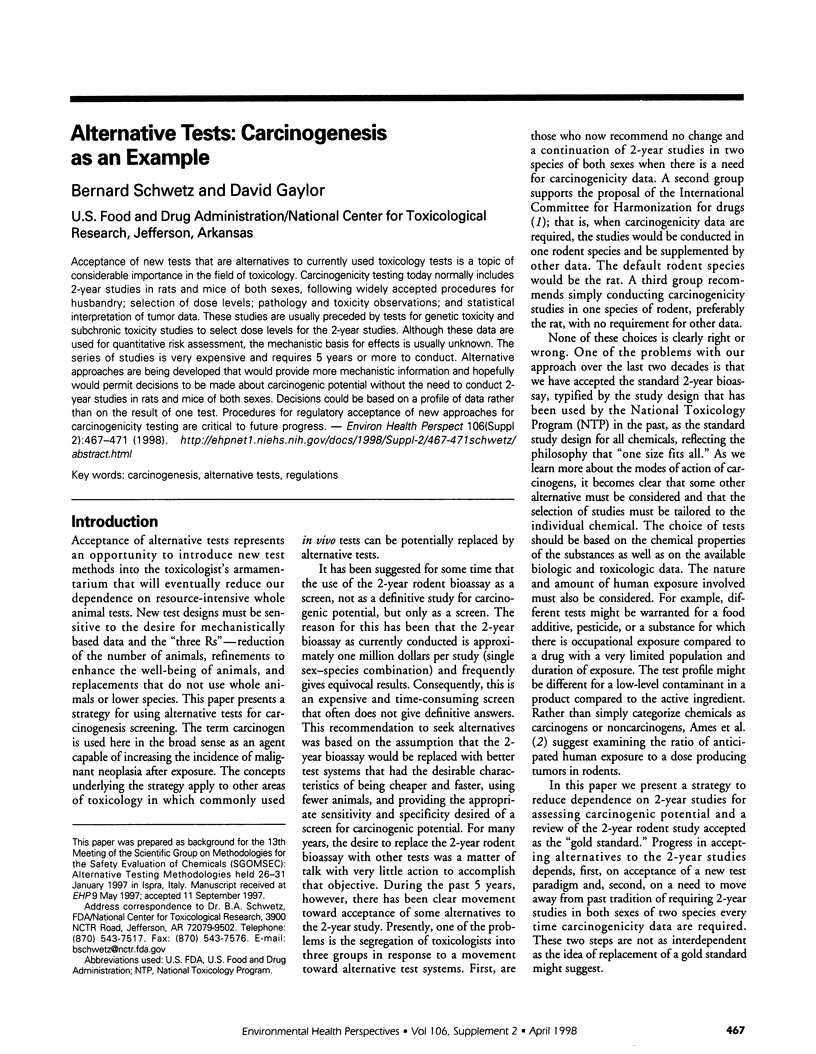
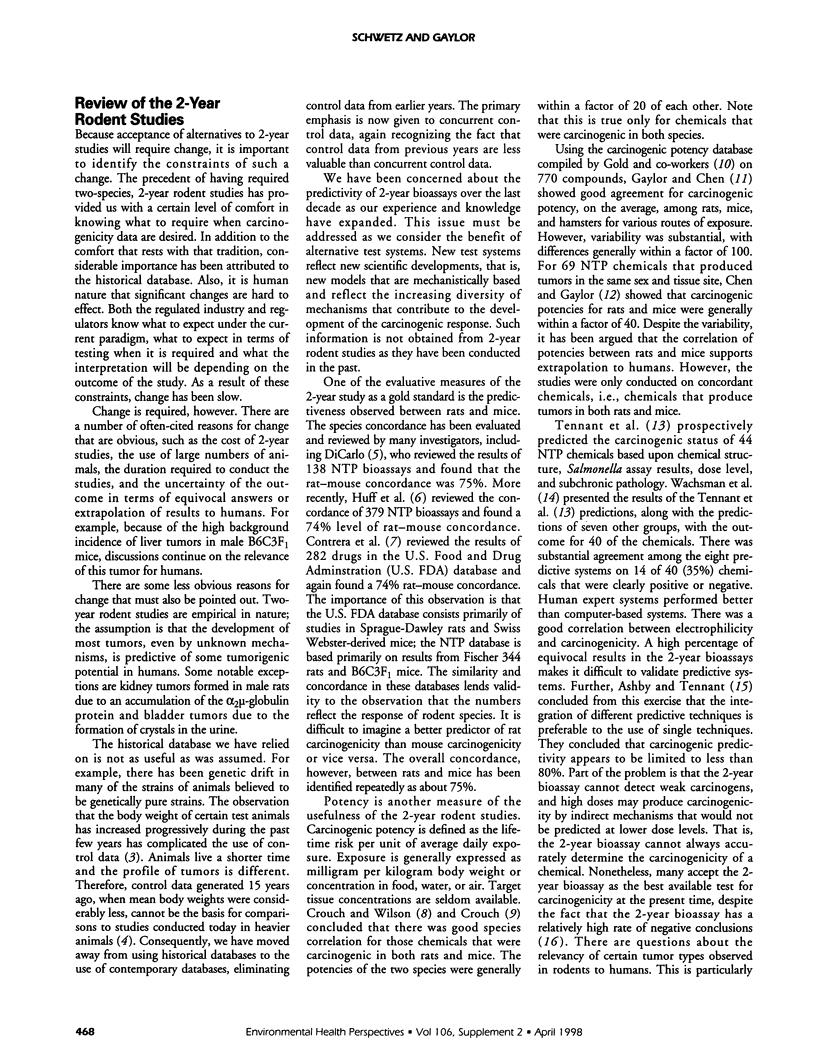
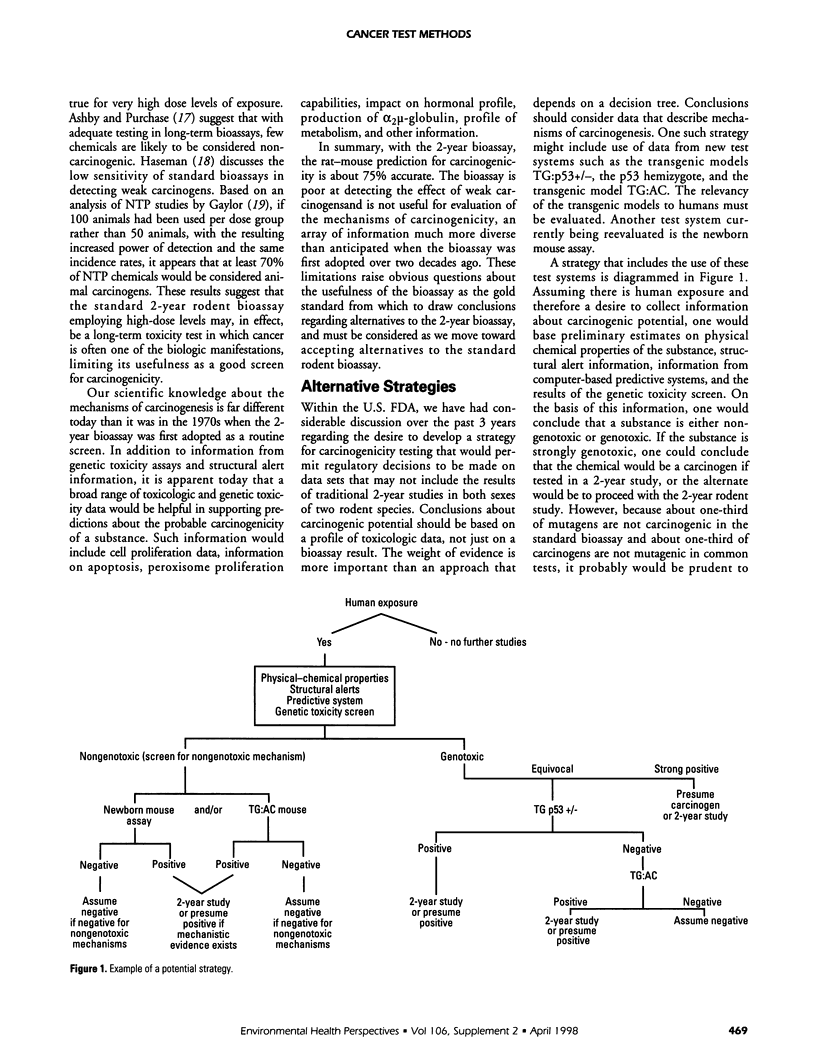
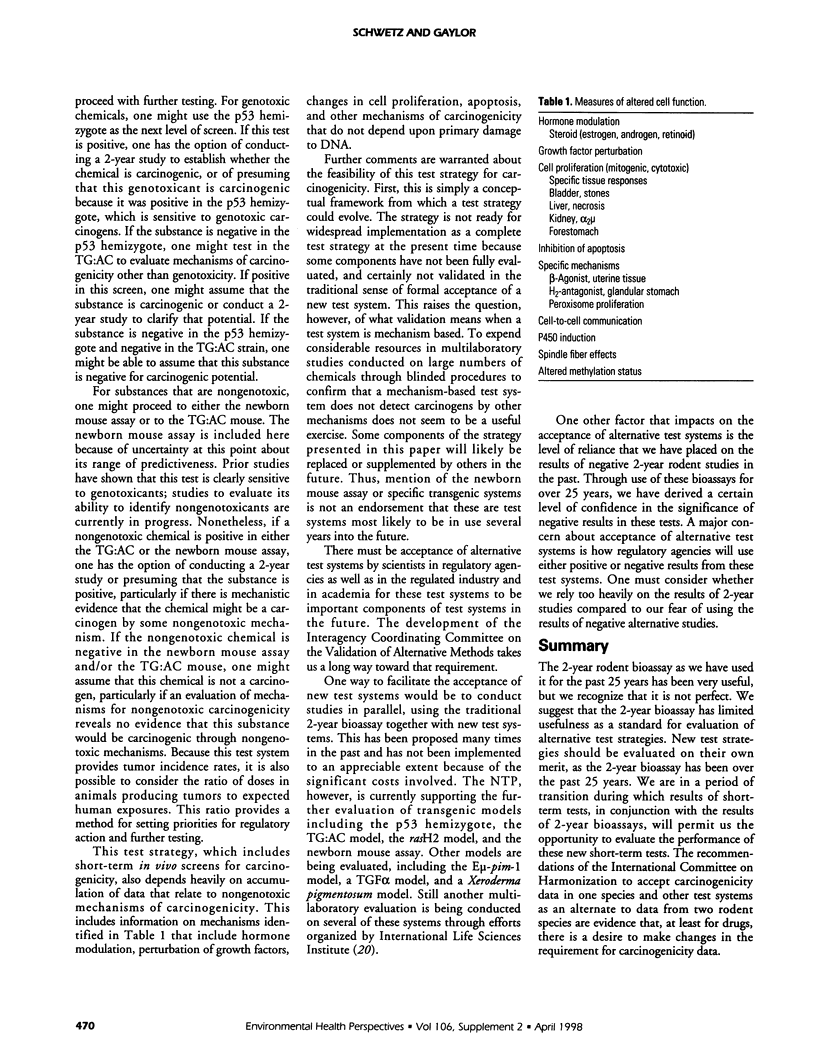
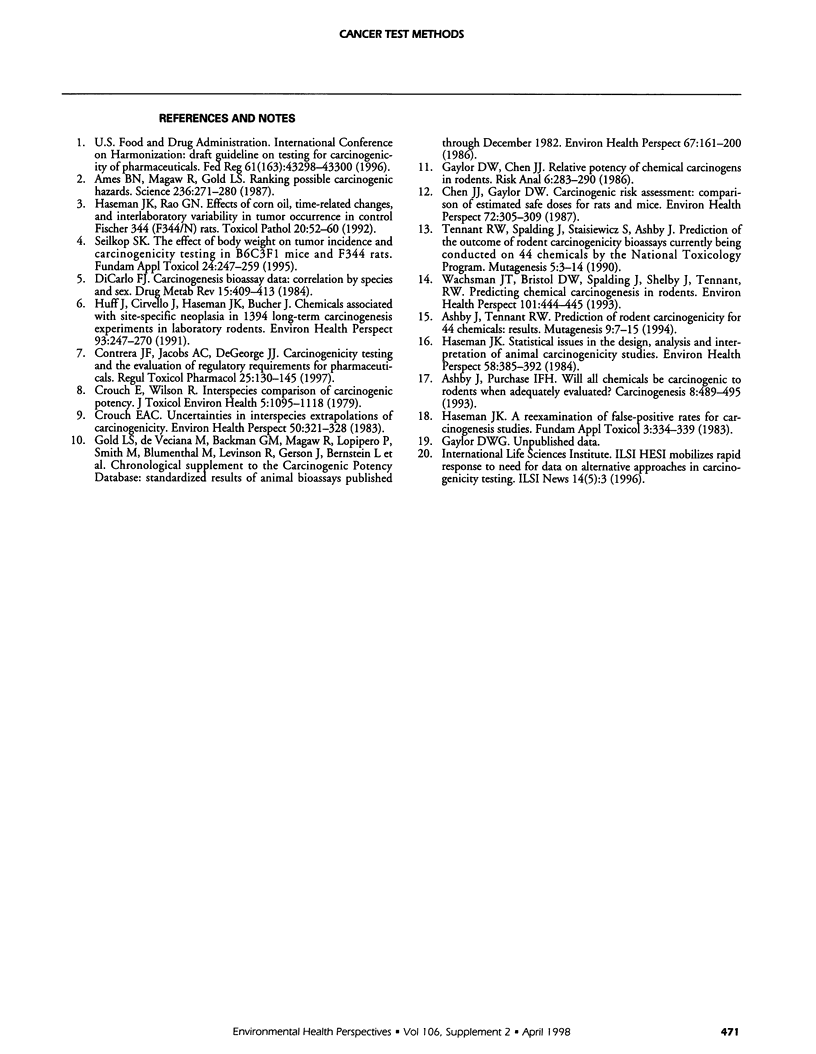
Selected References
These references are in PubMed. This may not be the complete list of references from this article.
- Ames B. N., Magaw R., Gold L. S. Ranking possible carcinogenic hazards. Science. 1987 Apr 17;236(4799):271–280. doi: 10.1126/science.3563506. [DOI] [PubMed] [Google Scholar]
- Ashby J., Purchase I. F. Will all chemicals be carcinogenic to rodents when adequately evaluated? Mutagenesis. 1993 Nov;8(6):489–493. doi: 10.1093/mutage/8.6.489. [DOI] [PubMed] [Google Scholar]
- Ashby J., Tennant R. W. Prediction of rodent carcinogenicity for 44 chemicals: results. Mutagenesis. 1994 Jan;9(1):7–15. doi: 10.1093/mutage/9.1.7. [DOI] [PubMed] [Google Scholar]
- Chen J. J., Gaylor D. W. Carcinogenic risk assessment: comparison of estimated safe doses for rats and mice. Environ Health Perspect. 1987 Jun;72:305–309. doi: 10.1289/ehp.8772305. [DOI] [PMC free article] [PubMed] [Google Scholar]
- Contrera J. F., Jacobs A. C., DeGeorge J. J. Carcinogenicity testing and the evaluation of regulatory requirements for pharmaceuticals. Regul Toxicol Pharmacol. 1997 Apr;25(2):130–145. doi: 10.1006/rtph.1997.1085. [DOI] [PubMed] [Google Scholar]
- Crouch E. A. Uncertainties in interspecies extrapolations of carcinogenicity. Environ Health Perspect. 1983 Apr;50:321–327. doi: 10.1289/ehp.8350321. [DOI] [PMC free article] [PubMed] [Google Scholar]
- Crouch E., Wilson R. Interspecies comparison of carcionogenic potency. J Toxicol Environ Health. 1979 Nov;5(6):1095–1118. doi: 10.1080/15287397909529817. [DOI] [PubMed] [Google Scholar]
- Di Carlo F. J. Carcinogenesis bioassay data: correlation by species and sex. Drug Metab Rev. 1984;15(3):409–413. doi: 10.3109/03602538409029968. [DOI] [PubMed] [Google Scholar]
- Gaylor D. W., Chen J. J. Relative potency of chemical carcinogens in rodents. Risk Anal. 1986 Sep;6(3):283–290. doi: 10.1111/j.1539-6924.1986.tb00220.x. [DOI] [PubMed] [Google Scholar]
- Gold L. S., de Veciana M., Backman G. M., Magaw R., Lopipero P., Smith M., Blumenthal M., Levinson R., Bernstein L., Ames B. N. Chronological supplement to the Carcinogenic Potency Database: standardized results of animal bioassays published through December 1982. Environ Health Perspect. 1986 Aug;67:161–200. doi: 10.1289/ehp.8667161. [DOI] [PMC free article] [PubMed] [Google Scholar]
- Haseman J. K. A reexamination of false-positive rates for carcinogenesis studies. Fundam Appl Toxicol. 1983 Jul-Aug;3(4):334–339. doi: 10.1016/s0272-0590(83)80148-1. [DOI] [PubMed] [Google Scholar]
- Haseman J. K., Rao G. N. Effects of corn oil, time-related changes, and inter-laboratory variability on tumor occurrence in control Fischer 344 (F344/N) rats. Toxicol Pathol. 1992;20(1):52–60. doi: 10.1177/019262339202000107. [DOI] [PubMed] [Google Scholar]
- Haseman J. K. Statistical issues in the design, analysis and interpretation of animal carcinogenicity studies. Environ Health Perspect. 1984 Dec;58:385–392. doi: 10.1289/ehp.8458385. [DOI] [PMC free article] [PubMed] [Google Scholar]
- Huff J., Cirvello J., Haseman J., Bucher J. Chemicals associated with site-specific neoplasia in 1394 long-term carcinogenesis experiments in laboratory rodents. Environ Health Perspect. 1991 Jun;93:247–270. doi: 10.1289/ehp.9193247. [DOI] [PMC free article] [PubMed] [Google Scholar]
- Seilkop S. K. The effect of body weight on tumor incidence and carcinogenicity testing in B6C3F1 mice and F344 rats. Fundam Appl Toxicol. 1995 Feb;24(2):247–259. doi: 10.1006/faat.1995.1028. [DOI] [PubMed] [Google Scholar]
- Tennant R. W., Spalding J., Stasiewicz S., Ashby J. Prediction of the outcome of rodent carcinogenicity bioassays currently being conducted on 44 chemicals by the National Toxicology Program. Mutagenesis. 1990 Jan;5(1):3–14. doi: 10.1093/mutage/5.1.3. [DOI] [PubMed] [Google Scholar]
- Wachsman J. T., Bristol D. W., Spalding J., Shelby M., Tennant R. W. Predicting chemical carcinogenesis in rodents. Environ Health Perspect. 1993 Oct;101(5):444–445. doi: 10.1289/ehp.93101444. [DOI] [PMC free article] [PubMed] [Google Scholar]


